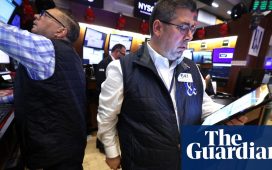The global art market generated an estimated $67.8bn of sales in 2022, its highest level since 2014 but not as strong as many expected, finds the latest Art Basel/UBS Art Market report, released today.
“While the year was certainly marked by exceptional sales and events, the overall results were much more mixed . . . resulting in more muted growth than anticipated,” writes Clare McAndrew, founder of consultancy Arts Economics and the author of the annual report. High-profile, money-spinning public sales, notably Christie’s $1.6bn haul from the collection of the late Microsoft co-founder Paul Allen, had given the impression of a stellar 2022.
Overall, she paints a picture of a top-heavy, fragmented market, running hard to stand still in a challenging macroeconomic environment. Annual sales grew 3 per cent, a sharp slowdown from the previous year’s 31 per cent gain, though 2021 was heavily flattered by the impact of most regions coming out of pandemic restrictions. Sales of art-related NFTs fell by half, to $1.5bn.
China proved the greatest geographic casualty last year: sales overall fell 14 per cent in 2022 to $11.2bn as the country’s zero-Covid policies took their toll and the wealth of its billionaire population decreased by 27 per cent.
China’s loss was the UK’s gain, back in the second spot in the global rankings and with higher sales (up 5 per cent) and improved market share (18 per cent, up one percentage point on 2021), boosted by its dealer community. Despite the pressures and complexities of Brexit, the report found that the UK was the most international of markets, with 60 per cent of dealer sales made to overseas buyers. At the other end of the scale, dealers in mainland China made only 13 per cent of sales internationally.
The annual shuffle between China and the UK for the second spot pales when compared to the growing dominance of the US market, motored out of New York and accounting for 45 per cent of global market value in 2022 (43 per cent in 2021), with sales up 8 per cent. The headquarters of most of the world’s heavyweight dealers are in New York and this is where the priciest auction sales happen. In 2022, 41 of the top 50 lots were sold in New York, including last year’s bestseller, Andy Warhol’s “Shot Sage Blue Marilyn” (1964) for $195mn, including fees.

McAndrew splits the art market into two broad sections — auctions (mostly public but including private sales made by auction houses) and dealers. The latter operate privately, so McAndrew gets their numbers through a survey which she has run for more than 15 years; it had just over 1,300 respondents this time.
She found that the dealer segment, made up of nearly 300,000 businesses, accounted for 55 per cent of market share in 2022 and grew sales by 7 per cent. The auction sector fell by 2 per cent, something that McAndrew acknowledges came as a surprise in what seemed to be a bumper year. “If you look beyond the press releases, it is a different story,” she says. She notes that Christie’s, Sotheby’s and Phillips all reported record years, with combined turnover up 11 per cent, but she identifies more than 500 middle-tier auction houses, below the handful at the top, where the picture was more mixed. A separate survey of about 100 mid-level auctioneers found that profits at 40 per cent fell in 2022.
Problems of polarisation persist throughout the market. At auction, the $10mn-plus works segment was the only area to increase in value (up 12 per cent) and accounted for 32 per cent of value but only half a percentage of volume last year. Dealers reflect a similar dynamic — the greatest growth and profitability was reported by those with a turnover of more than $10mn. These dealers also report the highest share of sales at art fairs and the highest average number of exhibitions per year (13), feeding the top-level frenzy. At galleries with a turnover below $250,000, sales fell by 3 per cent, compounded by the cost of living crisis that affected both their own operations and the spending power of their clients.
The costs of the art business capped growth last year: the report notes that shipping in particular had “rocketed”, with some dealers putting this at 40 per cent of expenditure, up from 20 per cent in 2021.
Online sales have fallen back considerably since the height of the pandemic (from 25 per cent of turnover in 2020 to 16 per cent in 2022). These are still above their pre-pandemic levels and, the report found, here to stay — notably to bring in the all-important new buyers.
Looking ahead, McAndrew finds that art businesses are in stress-test mode, working out how best to navigate the challenging economic environment and their own activities within it. She tells the Financial Times: “People are not sitting and doing nothing. The past few years have taught us that it isn’t all plain sailing but the good news is that some people are learning how to take charge.”
Find out about our latest stories first — follow @ftweekend on Twitter









